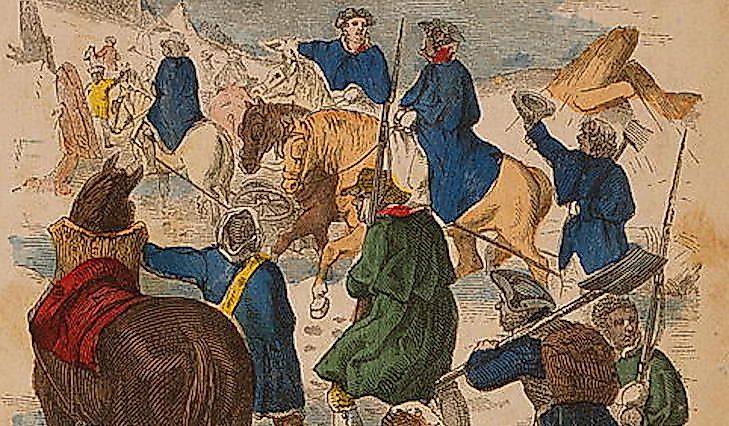The Capture of Fort Ticonderoga: The American Revolutionary War

5. Background
Fort Ticonderoga, located near the western edges of Lake Champlain in New York State, is strategically positioned between the United States and Canada along the Hudson River. It was constructed by the French during the French and Indian war. In 1758, British forces ambushed the fort in a bid to take over its coveted strategic position, but suffered a crushing defeat to the garrisoned French. They returned the following year in another siege, at which time they defeated the French handily. The British forces held this key strategic position until May 10, 1775 in the famous Capture of Fort Ticonderoga, when a contingent of Vermont minutemen took the fort in a pre-dawn ambush, claiming the position for the Continental Army.
4. Makeup
Despite the strategic importance of the event, the manpower involved was minimal. Around 80 men under Arnold and Allen engaged the garrison in the interests of the rebellion. On the other side, a Scottish foot-soldier regiment of only around 4-dozen-men-strong held the fort for the British, under the command of William Delaplace.
3. Description
On May 10th, 1775, in a surprise pre-dawn attack, the Vermont "Green Mountain Boys" combined forces with The New England Militia. These continentals waged an early morning campaign on the fort while the British garrison slept. The Green Mountain Boy and New England Militia, under the shared leadership of Ethan Allen and Benedict Arnold, boasted a contingent of fewer than two hundred militiamen. Originally organized to defend property rights in Vermont, this militia organized the taking of British-held Fort Ticonderoga. The pre-dawn ruse caught the British completely unaware and they offered a complete surrender.
2. Outcome
Only one of the rebels involved in the event was wounded, and one more was captured by the British. On the opposing side, each and every British soldier hold the fort was captured. The Continental forces smoothly captured the fort in the predawn siege. There were no deaths in the battle. It would have hardly have been a memorable battle, save that it was the first rebel victory of the Revolutionary War and is believed to have inspired the American Continental Army, spurring its ultimate victory. Also, the Green Mountain Boys and New England Militia recovered 59 pieces of artillery that equipped the rebel forces in their subsequent campaigns against the British.
1. Significance
The battle marked shifting tides in the Revolutionary War. The spoils gained from the British defeat propelled the eventual American victory, in terms of both morale and seized materials. The most important impact, however, was the capture of 59 pieces and over 60 tons of military supplies received from the fort. This equipment was put to good use by Henry Knox, who was able to position it advantageously in Dorchester Heights, overlooking Boston, giving him an impressive range in the rebel victory during the Siege of Boston. It is important to note that Fort Ticonderoga was eventually lost again to the British in 1777. In a Continental retreat and uncontested surrender to the British, superiors court-martialed several commanding officers as a result. In the incident, the American Continental troops at Fort Ticonderoga, under the leadership of General Burgoyne and General St. Clair in 1777, relinquished the position in a much-criticized retreat. Fort Ticonderoga had become an icon in the Revolutionary War and this loss was greatly felt. Burgoyne and St. Clair were among those later court-martialed, though they we eventually exonerated. Neither held a position of military leadership again. Though not part of the original 13 colonies, the Vermont militiamen would play important roles aside from that in Fort Ticonderoga. Outfits such as Allen’s Green Mountain Boys and Knowlton’s Rangers also played a role in using guerrilla tactics and espionage. Today, Fort Ticonderoga is maintained as a US National Historic Landmark, and lists among the US National Register of Historic Places. Numerous individual US Navy vessels and entire classes of warships have borne the Ticonderoga name as well.











